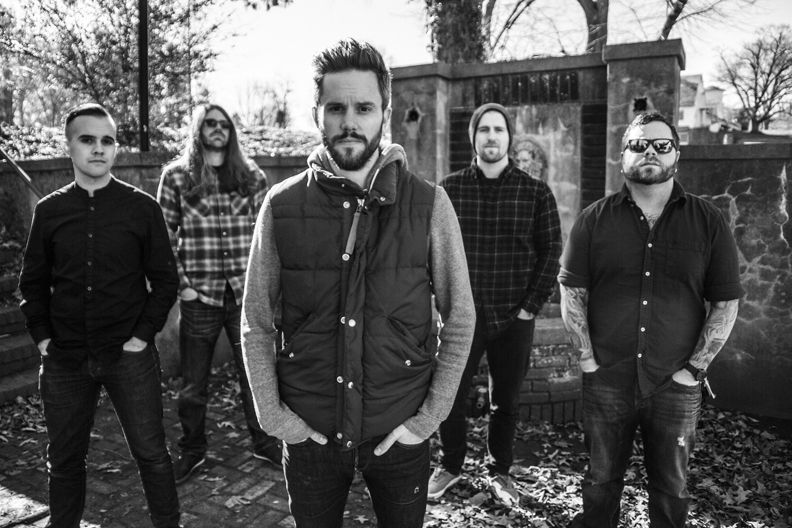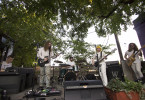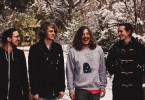Between the Buried and Me with Animals as Leaders and The Contortionist
Wednesday, July 15
Diamond Ballroom | Oklahoma City
For someone first acquainted with Between the Buried and Me in the early to mid-2000s — its 2005 release Alaska a classic for the metalcore kids in the same way Brand New’s Deja Entendu is for the now-bearded/then-mopey sadboys of the world — there was a certain level of shock spotting them on the Bonnaroo bill earlier this summer. Sure, you also found metal gods Slayer and Arkansas sludge-metal reckoners Pallbearer on the lineup, but each plays a festivalgoer-friendly brand of the heavy stuff welcomed more warmly than the shrieking styles of the Between the Buried and Me of yesteryear. In a lot of ways, the version of the band you hear today is totally different from that of a decade ago. Melody comes at the center, not convulsing angst, and the thrashing riffage has found a complement in heavily indebted prog-rock bass hooks. Somehow, Between the Buried and Me has become a savior of the hardcore crowds and high-as-a-kite festival crowds alike.
“With where we are at with the new material, we certainly feel really malleable to be able to fit in a bunch of different situations and different bills,” bassist Dan Briggs explained. “We have over the years already, but even more so now.”
More than anything, it’s probably the prog-love that has jumpstarted an evolution into a band that’s appeal is broader than its ever been without sacrificing the connection to the audience that it started with.
“Anytime that we’ve lost anyone along the way, there’s kind of a new group who are therefore interested in the same changes that steered the others away. We’ve been lucky in that regard, but I do have to think that the people who have stuck with us have grown with us,” Briggs said. “Maybe we’ve been a sort of gateway band in the same way that bands like Dream Theater were for us in terms of going backwards and getting into the makeup of that band … leading to your King Crimson, your Yes, your Pink Floyd. We’re very open to talking about the artists that we love, and our fans seem to enjoy hearing about it. They largely aren’t modern influences, and it’s maybe stuff that a lot of them had never heard of before.”
It’s been a purposeful training, though, too. Embracing influences is one thing, but being able to live up to them is another, and it’s taken work to get there.
“It’s been an unspoken thing and really goes back to being disciplined with our instruments and making a point to learn more all the time, whether that involved going to school for it, getting lessons or learning to read music,” Briggs offered when asked about the band’s transformation. “That attitude has carried over and never stopped. It’s not sitting down with a metronome and running scale patterns anymore, necessarily, but as arrangers, it’s honing in on those composition skills and taking chances and trying new things. A big, inherent part of us is never being content.”
The band’s latest LP — its seventh full-length — is probably the closest they’ve come to creating their own Dark Side of the Moon. Somewhere between Muse and The Nightmare Before Christmas soundtrack, Coma Ecliptic is a sweeping sci-fi epic that indulgently dives from soaring, melodic alt-rock, heady prog hallucinations and throaty hardcore fever dreams as intent on shattering your mind as expanding it.
“It’s a story about questioning your reality and making the most of your life,” Briggs explained of the album’s central concept. “It’s got a grim ending, and that works. At the core, it’s fun for us to write a piece — sort of science-fiction but has a human quality — that is dark. The guy dying in the end and being devoured in purple smoke — that’s a fun, grim, happy, sad ending to us.”
The full-on instrumental barrage — skilled and tightly arranged — is the sort of five-senses assault that many bands of their ilk aspire to but usually whiff and miss at. Both technically dazzling and primally satisfying, it’s an album that finds the band in transition towards self-actualizing, just as the fans that have followed them along are doing so themselves.
“We knew we were doing another conceptual record and wanted to beef up the theatrics of it, to make it feel even more cohesive and to get even better writing in that style,” Briggs said. “There’s so much to it. I think that on a lot of different levels, it was a mature step forward for us. It’s an album that we couldn’t have made 10 years ago because we just weren’t ready yet. It would have been a huge shift at the time, and we just needed to do what was natural all along the way to lead to this.”





